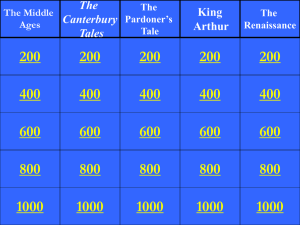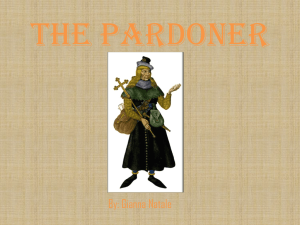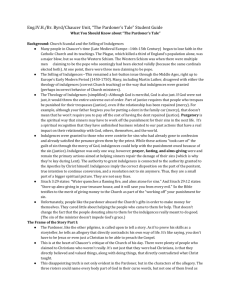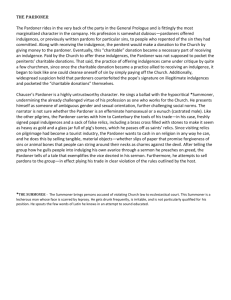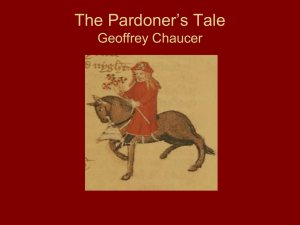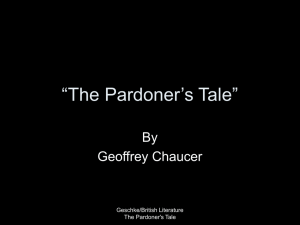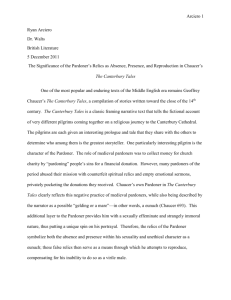Pardoner analysis
advertisement
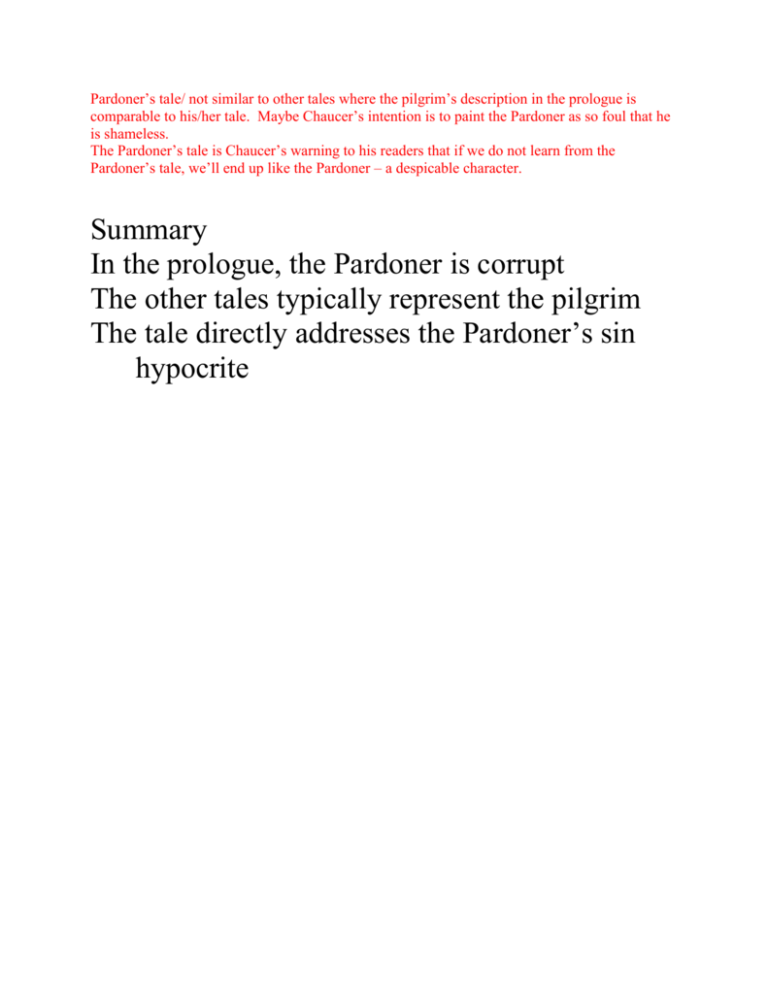
Pardoner’s tale/ not similar to other tales where the pilgrim’s description in the prologue is comparable to his/her tale. Maybe Chaucer’s intention is to paint the Pardoner as so foul that he is shameless. The Pardoner’s tale is Chaucer’s warning to his readers that if we do not learn from the Pardoner’s tale, we’ll end up like the Pardoner – a despicable character. Summary In the prologue, the Pardoner is corrupt The other tales typically represent the pilgrim The tale directly addresses the Pardoner’s sin hypocrite Castillo 2 Hayde Castillo Ms. Castillo English 3: European Literature November 11, 2013 Pardoner’s Tale: A Warning to Readers The Canterbury Tales, written by Geoffrey Chaucer in the late 14th century, is a satirical account of the many social classes of Medieval England. Chaucer pokes fun at almost all the pilgrims but reserves the harshest criticism for those members of the clergy who have forgotten their vows. However, none is more scandalous than the Pardoner, who openly flaunts his corrupt methods for acquiring wealth. In fact, many readers wonder how the Pardoner has the audacity to tell a tale about greed, the same sin he so proudly commits. The only conclusion one can make is that “The Pardoner’s Tale” is Chaucer’s warning to his readers that if we do not learn from the Pardoner’s tale, we’ll end up like the Pardoner – a despicable character. “The Pardoner’s Tale’s” theme is clearly that greed is the root of all evil. It tells of a trio of drunken, belligerent, rioters who seek Death to avenge their friend’s death. Along the way, they meet an old man who points the way towards Death, under a large oak tree. Instead, they find bags of gold coins, which causes them to plot against and kill each other out of greed. Thus, their greed is the cause of their deaths. Similarly, Chaucer describes the Pardoner as corrupt and greedy as the rioters in “The Pardoner’s Tale.” In the Prologue to The Canterbury Tales, Chaucer, the narrator, reveals that the Pardoner fools believers into thinking he has legitimate relics of the saints. He knowingly claims a pillowcase is the veil of the Virgin Mary, and he claims pigs’ bones are bones of saints. (714- Castillo 3 720) Furthermore, Chaucer, the narrator, makes clear that the Pardoner is cheating poor believers out of their money. And with these relics, any time he found Some poor up-country parson to astound, On one short day, in money down, he drew More than the parson in a month or two, And by his flatteries and prevarication Made monkeys of the priest and congregation. (721-726) These unflattering descriptions clearly show that the Pardoner is a despicable character. As such, Chaucer, the narrator, is not vague in his disdain for the Pardoner’s greed. Overall, “The Pardoner’s Tale” depicts the shamelessness of a hypocritical character in a unique way. No one in the Middle Ages would have wanted to emulate the Pardoner because it would have meant certain damnation. For today’s readers, the result is the same. This cautionary tale, told from one who is guilty of the same sin as the tale’s theme, stands to be a clear example of what greed will get the reader.
